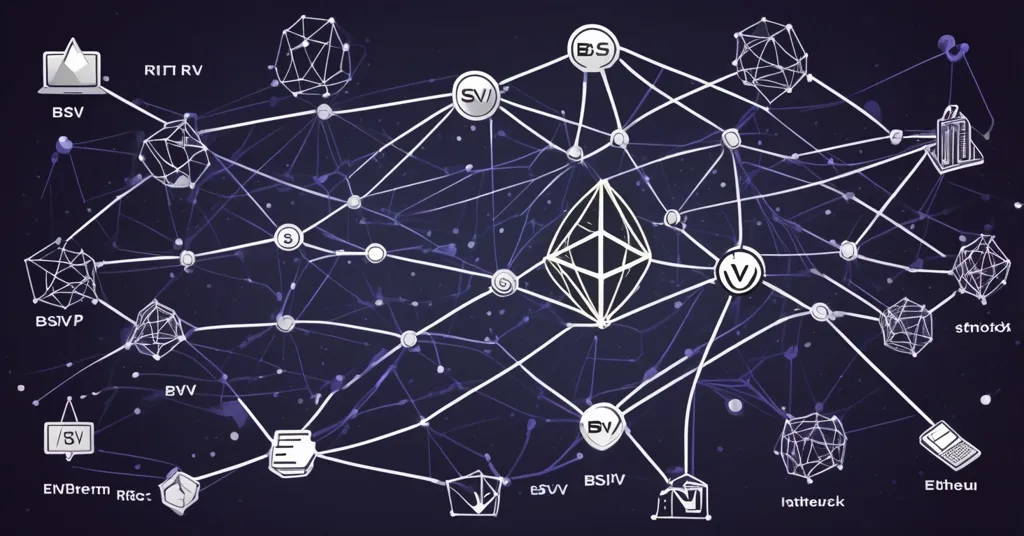Vitalik Buterin Proposes RISC-V to Fix Ethereum’s Efficiency Woes

The Hidden Problem Behind Ethereum’s Endless Upgrades
Ethereum’s relentless pursuit of upgrades highlights a network struggling with inefficiency and complexity, prompting co-founder Vitalik Buterin to propose a shift to RISC-V, an open-source instruction set architecture, to boost efficiency.
- Vitalik Buterin’s RISC-V proposal
- Ethereum’s evolution since 2015
- Challenges for everyday users
- BSV as a scalable alternative
Since its launch in 2015, Ethereum has undergone a series of fundamental changes that have reshaped it from a promising platform into what some now call a “mess.” The journey started with a hard fork in 2016 after the notorious DAO hack, which resulted in the creation of Ethereum Classic. Fast forward to 2021, and the network introduced EIP-1559, aiming to overhaul its economics. Then, in 2022, Ethereum transitioned from proof-of-work (PoW), where miners use computational power to validate transactions, to proof-of-stake (PoS), where validators stake their cryptocurrency to participate in transaction validation. This shift was supposed to enhance scalability and efficiency, but the reality has been more complex.
Despite these efforts, Ethereum’s user experience remains challenging. High and unpredictable gas fees, which are the costs of processing transactions on the network, continue to deter new users. The introduction of layer-two solutions like rollups, which are designed to improve scalability by processing transactions off the main Ethereum chain, has added another layer of complexity. While these solutions aim to scale the network, they’ve also begun siphoning revenue away from Ethereum stakers, raising concerns about the network’s long-term security.
Vitalik Buterin, Ethereum’s co-founder, acknowledges these issues with his proposal to replace the Ethereum Virtual Machine (EVM), the runtime environment for smart contracts on Ethereum, with RISC-V. Buterin claims this could improve efficiency by up to 100x, potentially simplifying the execution layer and making Ethereum more accessible to developers and users alike.
“Ethereum is a mess, and Vitalik Buterin’s recent proposal suggests he knows it.”
Yet, Ethereum’s leadership seems more focused on theoretical improvements than on addressing the everyday user’s experience. This disconnect has led some to seek alternatives like Bitcoin Satoshi Vision (BSV). BSV claims to have already achieved what Ethereum is striving for: processing 1 million transactions per second at low fees, while maintaining the original Bitcoin protocol with the sCrypt smart contracting language. For those frustrated with Ethereum’s complexity and cost, BSV presents a stable and efficient alternative.
“Unlike Buterin, who overlooked what Bitcoin was capable of, we abandoned BTC and restored the original protocol.”
The BSV ecosystem offers various tools and resources to support developers and users. Project Babbage provides a suite of development tools, while HandCash offers a user-friendly wallet for interacting with the blockchain. Additionally, Sentinel Node leverages BSV’s capabilities for cybersecurity applications, showcasing the platform’s versatility.
As Ethereum continues its cycle of upgrades, it’s crucial to consider whether these changes truly benefit everyday users. For those curious about alternatives, BSV offers a compelling case for scalability and stability.
“If you’re beginning to doubt Ethereum or want to test BSV out of curiosity, why not give it a go?”
Key Takeaways and Questions
- What is the proposed solution to Ethereum’s inefficiency?
The proposed solution is to replace Ethereum’s EVM with RISC-V, which Vitalik Buterin claims could improve efficiency by up to 100x.
- How has Ethereum evolved since its launch?
Since its launch in 2015, Ethereum has undergone several fundamental changes, including a hard fork after the DAO hack, multiple network upgrades, a transition to proof-of-stake, and the introduction of EIP-1559 to alter its economics.
- What are the challenges of using Ethereum for everyday users?
Everyday users face high and unpredictable gas fees, unreliable rollups, insecure bridges, and a confusing array of layer-two solutions, making the network difficult to navigate.
- How does BSV claim to differ from Ethereum?
BSV claims to offer high scalability with 1 million transactions per second at low fees, maintaining the original Bitcoin protocol with sCrypt for smart contracts, and a stable economic model.
- What are some tools and resources available for BSV?
Tools and resources for BSV include Project Babbage, HandCash wallet, Sentinel Node, and various libraries provided by the BSV Association (BSVA).



